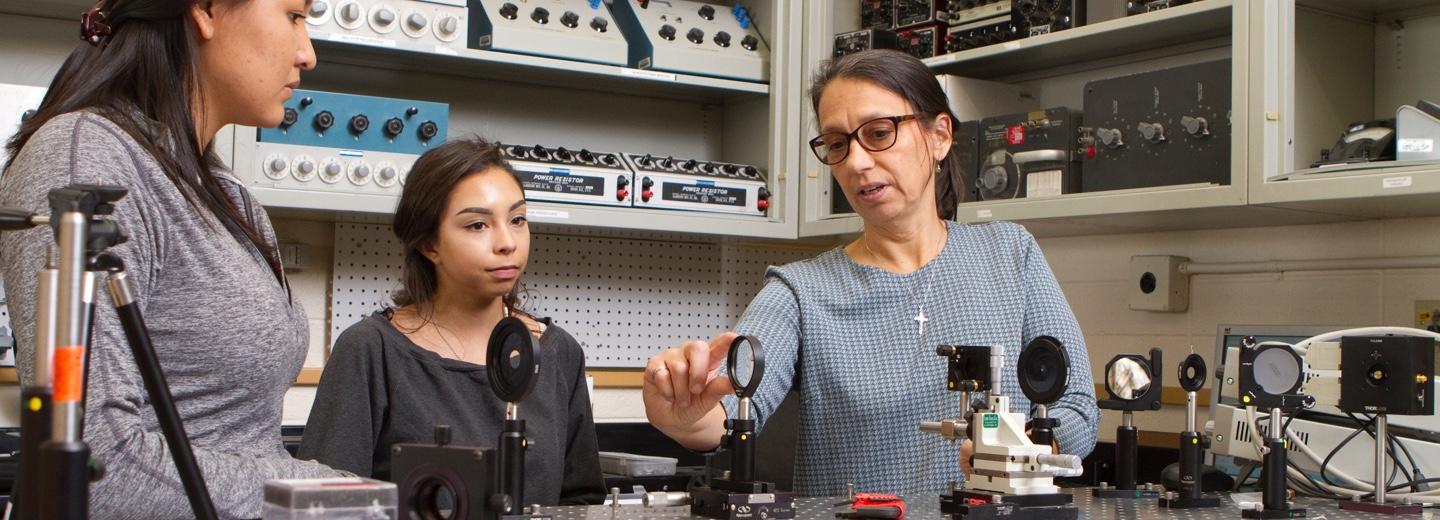Additional Resources
Refining your teaching craft is a lifelong endeavor. If you would like to explore more resources on equitable classrooms, we recommend the following websites and readings, including those cited in this toolkit.
Recommended Websites
Scaffolded Anti-Racist Resources
The Glossary of Education Reform
Anti-Racism - Association for Prevention Teaching and Research
Ten Things Everyone Should Know about Race
Relevant in an all-white school.
Working with Undocumented, Dreamer, and Immigrant Students
Teaching Resources from University Websites
An approach for teaching diversity (University of Wisconsin Whitewater)
Inclusive teaching (University of Central Florida)
Culturally Responsive & Inclusive Curriculum Resources (Portland State University)
Inclusive Teaching Resources (Marquette University)
Inclusive Teaching Guide (Columbia University)
Resources for Teaching International Students (Washington University)

Citations and Recommended Readings
Adams, Maurianne, & Bell, Lee A., with Goodman, Diane (2007). Teaching for diversity and social justice. New York: Routledge.
Allen, Brenda J. (2011). Difference matters: Communicating social identity (2nd. Ed.). Long Grove, IL: Waveland Press.
Armstrong, Mary. A. (2011). Small world: Crafting an inclusive classroom (No matter what you teach). The NEA Higher Education Journal, Fall 2011, 51-61.
Brookfield, Stephen D. (2017). Becoming a critically reflective teacher. San Francisco: John Wiley & Sons.
Crandall, Jennifer, & Garcia, Gina A. (2016, July 27). Am I overreacting? Understanding and combating microaggressions. Retrieved from https://www.higheredtoday.org/2016/07/27/understanding-and-combatting-microaggressions-in-postsecondary-education/
Crenshaw, Kimberlé (1991). Mapping the margins: Intersectionality, identity politics, and violence against women of color. Stanford Law Review, 43(6), 1241-1299.
Cullen, Maura. (2008). 35 dumb things well-intentioned people say that widen the diversity gap. Garden City, NY: Morgan James.
Freire, Paulo. (1970). Pedagogy of the oppressed. New York, NY: The Continuum International Publishing Group Inc.
Gay, Geneva (2010). Culturally responsive teaching : Theory, research, and practice. 2nd ed. Multicultural Education Series. New York: Teachers College.
Hammond, Zaretta (2015). Culturally responsive teaching & the brain: Promoting authentic engagement and rigor among culturally and linguistically diverse students. Thousand Oaks, CA: Corwin.
Harro, Bobbie. (1997). Cycle of socialization. In Adams, M., Blumenfeld, W., Chase, Catalano, C. J., Dejong, K., Hackman, H. W., Hopkins, L. E., Love, B., Peters, M. L., Shlasko, D., Zuniga, X. Readings for diversity and social justice (pp.15-21). New York, NY: Routledge
Hardinam, Rita, & Jackson, Bailey (2007). Conceptual foundations for social justice education. In Adams, M., Bell, L. A., & Griffin, P. (Eds.) Teaching for diversity and social justice (pp. 40-41). New York, NY: Routledge.
Jenkins, China M. (2016). “It’s the Right Thing to Do: The Voices of Seven White Culturally Responsive Professors of Education,” Adult Education Research Conference. http://newprairiepress.org/aerc/2016/papers/23
Johnston, Evan., D’Andrea Montalbano, Pamela., & Kirkland, David.E. (2017). Culturally Responsive Education: A Primer For Policy And Practice. New York: Metropolitan Center for Research on Equity and the Transformation of Schools, New York University.
Ladson-Billings, Gloria (1992). Reading between the lines and beyond the pages: A culturally relevant approach to literacy teaching. Theory into Practice, 31, 312-320
Larke, Patricia. (2013). Culturally responsive teaching in higher education: What professors need to know. Multiculturalism into the Curriculum, Vol. 391, (pp. 38-50).
Lee-Thomas, Gwendolyn. (2008). Faculty self-examination of racial identity development and student learning. Journal on Excellence in College Teaching, 19 (2&3), 7-29.
Malcom-Piquex, Lindsey, & Bensimon, Estela (2015). Design Principles for Equity and Excellence at Hispanic-Serving Institutions. Perspectivas Issues in Higher Education Policy and Practice. Issue 4. Retrieved from: https://cue.usc.edu/files/2016/01/30207-PerspectivasPolicyBrief_Issue4-2.pdf.
Malcom-Piqueux, Lindsey, & Bensimon, Estela (2017). Taking equity-minded action to close equity gaps. Peer Review, Vol. 19 (2), 5-8.
Murray, John. 2001. Faculty Development in Publicly Supported 2-Year Colleges. Community College Journal of Research and Practice. Vol. 25 (7), 487-502. Retrieved: https://doi-org.du.idm.oclc.org/10.1080/10668920152407883
Penuel, William; Fishman, Barry; Yamaguchi, Ryoko; & Gallagher, Lawrence (2007). What makes professional development effective? Strategies that foster curriculum implementation. American Educational Research Journal. Vol. 44 (4), 921-958. Retrieved from: https://www.jstor.org/stable/30069418?seq=1&cid=pdf-reference#page_scan_tab_contents.
Song, Meiyi (2019) TEACHING AT PITT: Growth mindset and its implication in teaching. Retrieved: https://www.utimes.pitt.edu/news/teaching-pitt-growth
Stenhouse, Vera L (2012). Teacher educators’ understanding of diversity: Painting a picture through narrative portraits. Multicultural Education Magazine, 14—23.
Tatum, Beverly D. (2000). The complexity of identity: “Who am I?.” In Adams, M., Blumenfeld, W. J., Hackman, H. W., Zuniga, X., Peters, M. L. (Eds.), Readings for diversity and social justice: An anthology on racism, sexism, anti-semitism, heterosexism, classism and ableism (pp. 9-14). New York: Routledge.
Tuitt, Frank (2003). Afterword: Realizing a more inclusive pedagogy in Howell, A. & Tuitt, F. (Eds.), Race and higher education: Rethinking pedagogy in diverse college classrooms (pp. 243-265). Cambridge, MA: Harvard Educational Review